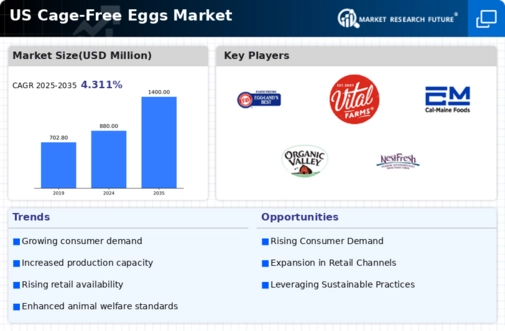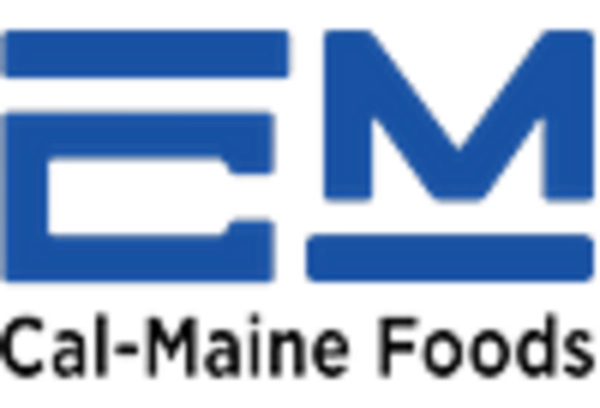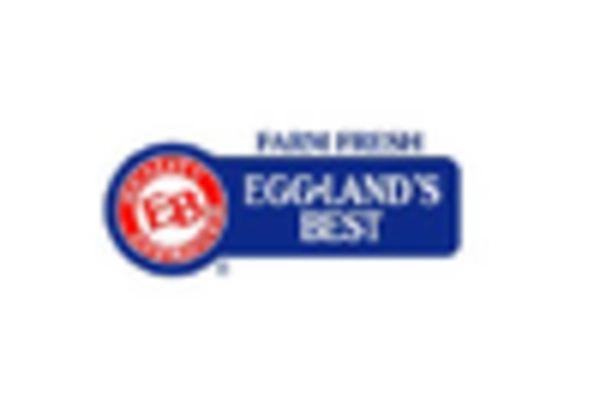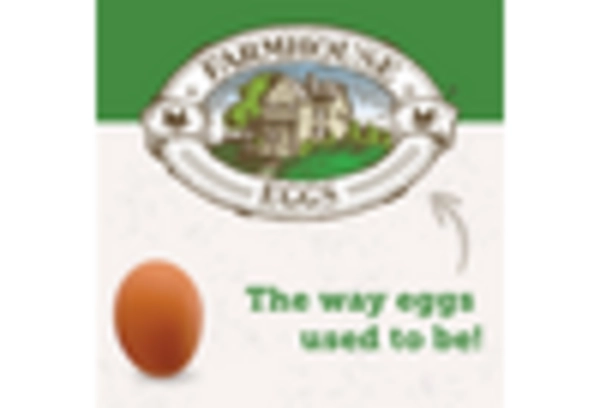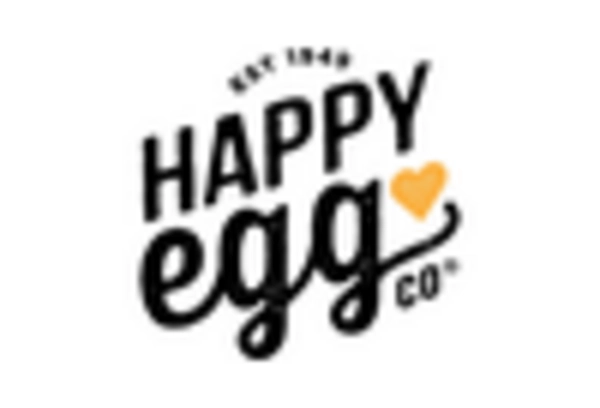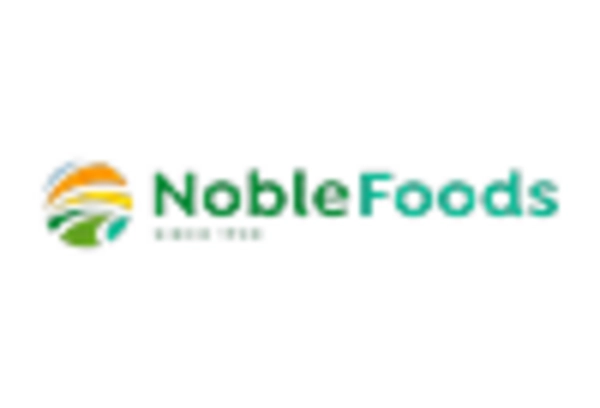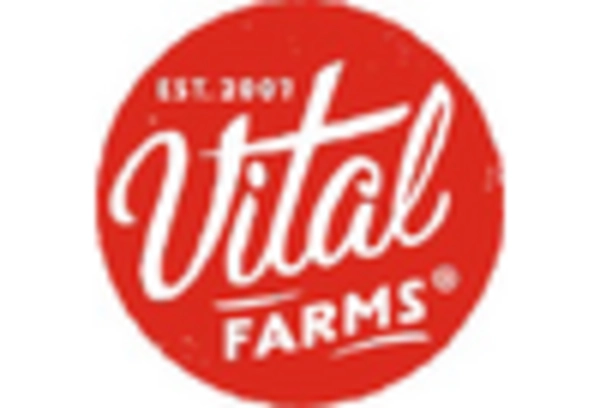Sustainability Trends
Sustainability is becoming a crucial factor influencing consumer choices in the cage free-eggs market. As environmental concerns rise, consumers are increasingly inclined to support products that align with sustainable practices. Cage free egg production is often perceived as more environmentally friendly compared to conventional methods, as it typically involves better land use and reduced waste. Reports indicate that consumers are willing to pay a premium for sustainably sourced products, with some estimates suggesting that the market for sustainable eggs could grow by 20% annually. The cage free-eggs market is thus adapting to these sustainability trends, with producers implementing eco-friendly practices to attract environmentally conscious consumers. This alignment with sustainability not only enhances brand loyalty but also positions the industry favorably in a competitive market.
Animal Welfare Advocacy
The growing emphasis on animal welfare is significantly impacting the cage free-eggs market. Advocacy groups and consumers alike are increasingly vocal about the ethical treatment of animals, leading to a shift in purchasing behaviors. Many consumers now actively seek out cage free eggs, driven by the belief that these products come from hens raised in more humane conditions. Legislative measures, such as California's Proposition 12, which mandates cage free housing for egg-laying hens, further bolster this trend. The cage free-eggs market is responding to these changes, with many producers transitioning to cage free systems to meet consumer demand and comply with evolving regulations. This advocacy for animal welfare is not only reshaping consumer choices but also influencing production practices across the industry.
Growing Health Consciousness
The increasing awareness of health and nutrition among consumers appears to be a pivotal driver for the cage free-eggs market. As individuals become more informed about the nutritional benefits of cage free eggs, such as higher omega-3 fatty acid content and lower cholesterol levels, demand is likely to rise. Reports indicate that consumers are willing to pay a premium for products perceived as healthier, with some surveys suggesting that up to 60% of consumers prefer cage free options over conventional eggs. This shift in consumer preference is influencing retailers to expand their offerings of cage free products, thereby enhancing market growth. The cage free-eggs market is thus experiencing a transformation, as health-conscious consumers increasingly prioritize animal welfare and sustainable farming practices.
Retailer Initiatives and Partnerships
Retailers are increasingly recognizing the potential of the cage free-eggs market, leading to strategic initiatives and partnerships aimed at expanding their product lines. Major grocery chains are committing to sourcing only cage free eggs, with some pledging to achieve 100% cage free offerings by 2025. This commitment is likely to drive demand and encourage suppliers to increase production capacity. Additionally, collaborations between retailers and egg producers are emerging, focusing on improving supply chain efficiencies and ensuring product availability. The cage free-eggs market is thus witnessing a shift in retail strategies, as companies adapt to consumer preferences and regulatory pressures. These initiatives not only enhance market visibility but also contribute to the overall growth of the cage free segment.
Technological Advancements in Production
Technological innovations are playing a crucial role in shaping the cage free-eggs market. Advances in farming techniques, such as improved feeding systems and automated egg collection, are enhancing production efficiency and animal welfare. These technologies not only help in meeting the rising demand for cage free eggs but also ensure that producers can maintain quality standards. The integration of data analytics and monitoring systems allows for better management of hen health and productivity, which is vital for sustaining growth in the cage free-eggs market. As producers adopt these technologies, they are likely to see increased profitability and reduced operational costs, further driving the expansion of the market. This focus on innovation is essential for meeting consumer expectations and maintaining competitiveness.


